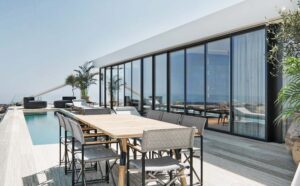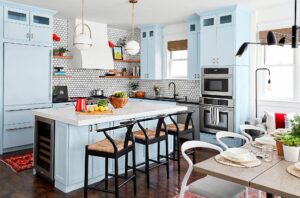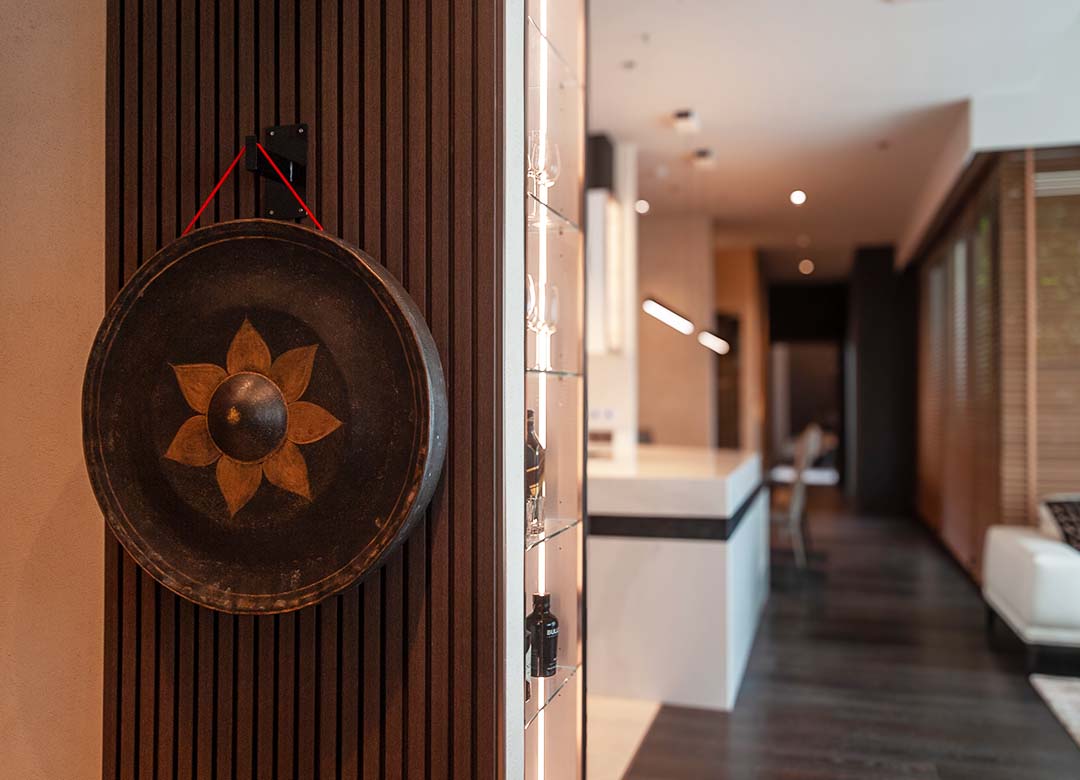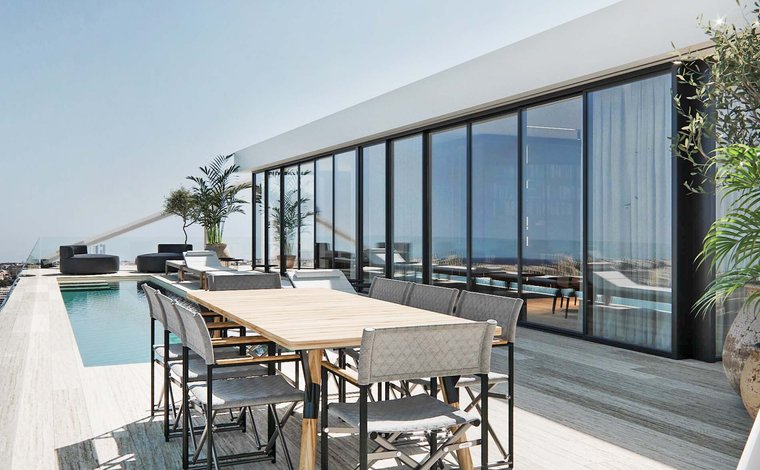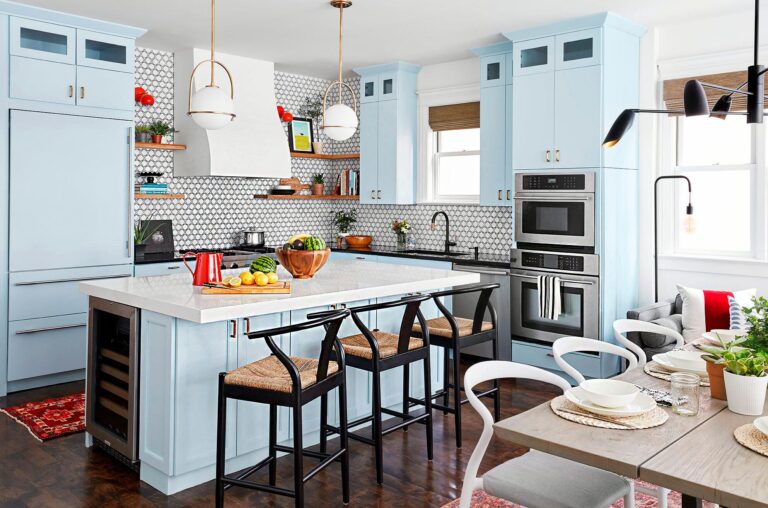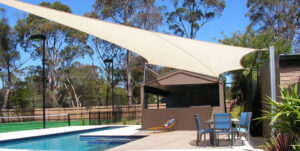In the bustling heart of Bangkok, a city where ancient temples stand alongside sleek skyscrapers, a fascinating blend of old and new is evident not just in the skyline but also within the interiors of homes and businesses. This harmonious fusion of traditional Thai elements with modern interior design creates spaces that are both culturally rich and contemporarily stylish.
Key Takeaways:
- Harmonious Fusion – Combining Thai traditional elements with modern interior design creates a balanced and aesthetically rich space that honors cultural heritage while embracing contemporary functionality.
- Material and Texture Play – Natural materials like teak wood, bamboo, and rattan add warmth, while sleek surfaces and minimalist layouts keep the design fresh and modern.
- Strategic Color Usage – Traditional Thai colors like deep reds, golds, and earth tones can be subtly blended with modern neutral palettes for a sophisticated yet vibrant look.
- Balanced Decor Approach – Thoughtfully integrating Thai-inspired furniture, textiles, and artwork ensures a cohesive design without overwhelming the modern aesthetic.
- Personalized and Practical – The best fusion interiors reflect personal taste while maintaining functionality, ensuring a space that is both beautiful and suited to contemporary living.
This fusion not only pays homage to Thailand’s rich cultural heritage but also caters to contemporary lifestyles, making Interior Design Bangkok a perfect blend of tradition and modern sophistication for homeowners and businesses seeking unique, elegant spaces.
Imagine walking into a room where the serenity of a traditional Thai temple meets the sleek functionality of modern design. This blend not only pays homage to Thailand’s rich cultural heritage but also caters to contemporary lifestyles. But how does one achieve this delicate balance?
The Essence of Traditional Thai Design
Traditional Thai design is characterized by:
- Natural Materials: Utilization of teak wood, bamboo, and rattan.
- Intricate Patterns: Detailed carvings and motifs, such as the Phum Khao Bin pattern, reflecting religious and cultural stories.
- Vibrant Colors: Rich hues inspired by nature, including deep reds, golds, and greens.
- Symbolic Decor: Incorporation of elements like Buddha statues and traditional pottery.
These components create spaces that exude warmth, spirituality, and a deep connection to nature.
Modern Interior Design: A Brief Overview
Modern interior design emphasizes:
- Simplicity: Clean lines and minimalistic layouts.
- Functionality: Practicality without compromising aesthetics.
- Neutral Palettes: Use of whites, grays, and blacks to create airy spaces.
- Technological Integration: Smart home features and contemporary materials.
This approach focuses on creating efficient, uncluttered, and visually appealing environments.
Merging Two Worlds: The Concept of Fusion Design
Combining traditional Thai elements with modern design involves:
- Selective Integration: Thoughtfully incorporating traditional pieces into modern settings.
- Balance: Ensuring neither style overwhelms the other.
- Cohesiveness: Maintaining a unified theme throughout the space.
This fusion results in interiors that are both timeless and current.
Key Elements of Thai-Inspired Modern Interiors
a. Architectural Features
Incorporate traditional Thai architectural elements, such as:
- Wooden Beams: Exposed beams add rustic charm.
- Open Spaces: Promote airflow and connectivity between rooms.
b. Materials and Textures
Blend materials like:
- Teak Wood: Used for flooring or furniture to introduce warmth.
- Bamboo and Rattan: Ideal for accessories and furnishings.
c. Color Schemes
Utilize:
- Earthy Tones: Browns, beiges, and greens to create a calming atmosphere.
- Accents: Incorporate vibrant colors through decor items.
d. Furniture and Decor
Choose pieces that:
- Combine Styles: Modern furniture with traditional Thai carvings.
- Highlight Craftsmanship: Showcase local artisans’ work.
e. Lighting
Implement:
- Natural Light: Large windows or skylights.
- Ambient Lighting: Soft, warm lights to enhance coziness.
Benefits of Incorporating Thai Elements
- Cultural Connection: Reflects personal appreciation for Thai heritage.
- Unique Aesthetic: Distinguishes interiors from generic designs.
- Enhanced Ambiance: Creates a serene and inviting environment.
Challenges and Considerations
- Overcrowding: Avoid cluttering spaces with too many decorative items.
- Cultural Sensitivity: Ensure respectful representation of Thai symbols.
- Consistency: Maintain a cohesive design without mixing too many styles.
Case Studies: Successful Integrations
a. Urban Condos in Bangkok
Many condos in Bangkok have successfully merged traditional Thai elements with modern design. For instance, incorporating carved wood panels and exposed brick walls adds texture and depth to contemporary spaces.
b. Luxury Resorts
Resorts like the Four Seasons Resort Koh Samui seamlessly blend traditional Thai architecture with modern luxury, showcasing thatched roofs and stained teak alongside contemporary amenities.
Tips for Homeowners in Bangkok
- Start Small: Introduce Thai elements through accessories before committing to larger changes.
- Consult Professionals: Engage with interior designers experienced in fusion designs.
- Personalize: Ensure the space reflects individual tastes alongside cultural elements.
Integrating traditional Thai elements into modern interior design is akin to crafting a symphony where each note, whether old or new, plays in harmony. This fusion not only preserves cultural heritage but also enriches contemporary living spaces, offering the best of both worlds.
How can I incorporate Thai elements without overwhelming my modern decor?
To blend Thai elements seamlessly, start with subtle additions like handwoven textiles, carved wooden accents, or Thai pottery. Gradually introduce statement pieces, such as a traditional Thai bench or artwork, ensuring they complement the modern aesthetic without dominating the space.
Are there specific colors that define traditional Thai interiors?
Yes, traditional Thai interiors embrace deep reds, golds, greens, and earth tones, inspired by nature and Buddhism. These colors symbolize prosperity, tranquility, and warmth. When combined with modern neutral tones, they create a balanced and visually appealing interior without overpowering the design.
How can I incorporate Thai elements without overwhelming my modern decor?
Absolutely! Thai elements blend well with styles like Scandinavian minimalism, industrial chic, or contemporary aesthetics. The key is to maintain harmony by selecting complementary textures, colors, and materials. Combining teak wood with sleek furniture or adding Thai silk cushions enhances a fusion design.


